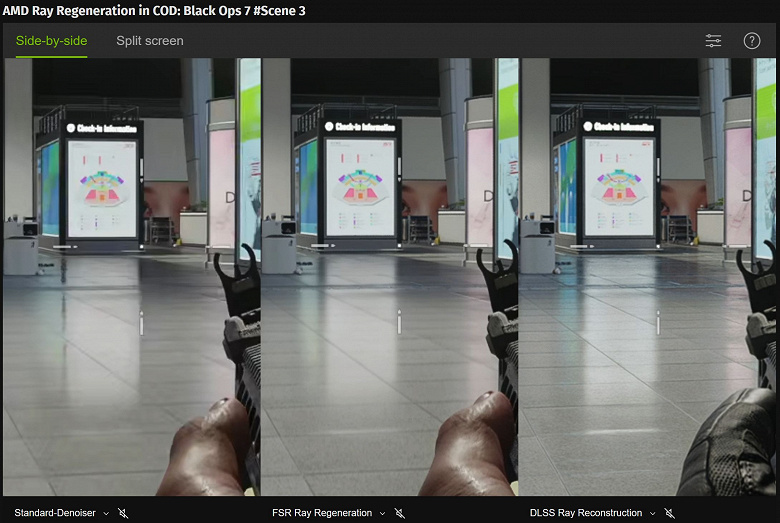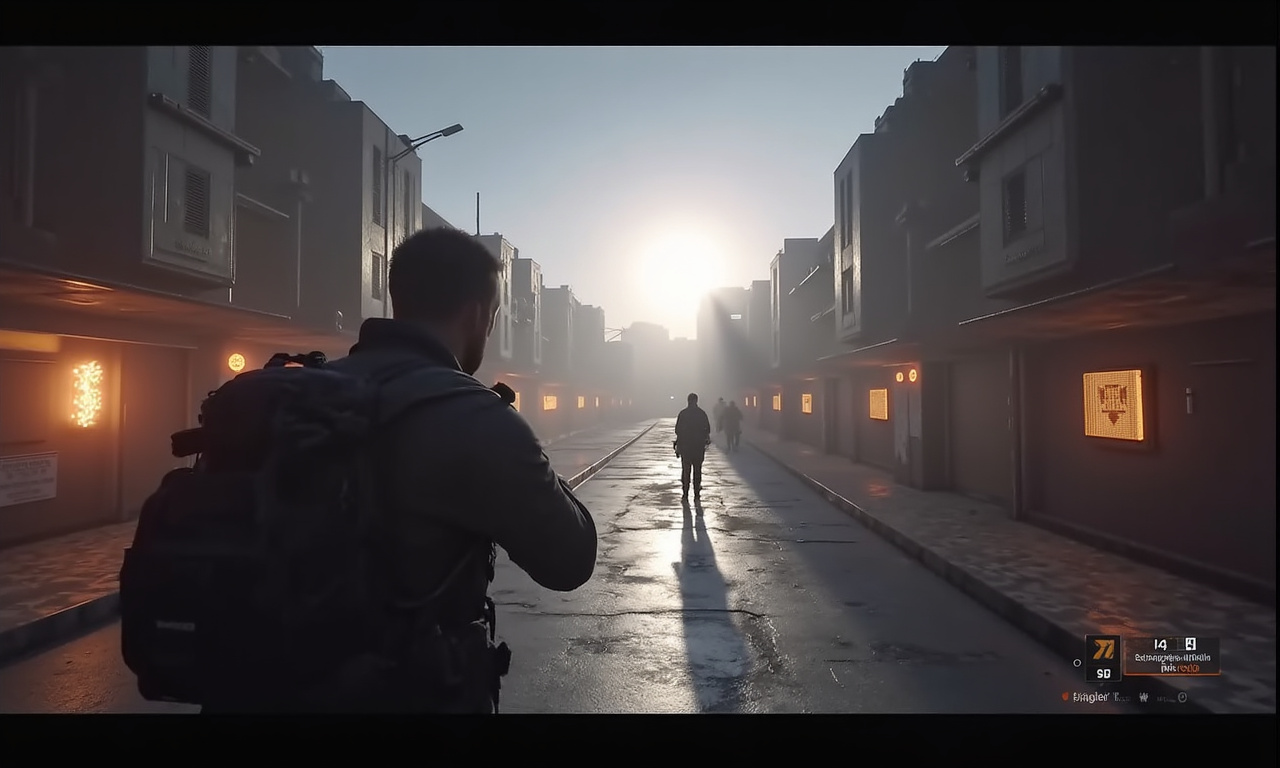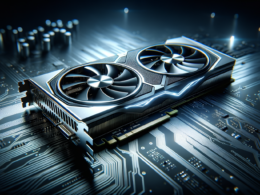In the game Call of Duty Black Ops 7, without much fanfare, one of the technologies from the AMD Redstone package called FSR Ray Regeneration (also known as ML Ray Regeneration) was introduced to restore full-quality ray detail. The authors at ComputerBase have already tested this technology, comparing it with Nvidia DLSS Ray Reconstruction.

The main conclusion is that the Nvidia variant is generally better. Yes, evaluating a technology by one game isn’t fair, but at least in this case, AMD’s implementation falls short. Ray Regeneration often provides sharper reflections than Ray Reconstruction and overall works much better than the game’s built-in noise reduction. However, Nvidia’s development noticeably boasts higher image stability.
AMD has not yet reached its goal, as the new technology currently encounters a severe problem: image instability. Especially when the game’s own noise suppression creates much blurring or even graphical glitches, the stability of reflections breaks during FSR ray regeneration-the choice of AMD’s alternative doesn’t solve the problem. In the worst case, using FSR RR even detailed reflections become blurred and distorted across the image, which is quite distracting. The effect from the game noise suppression is less noticeable in comparison to this. This is a significant problem, and AMD needs to resolve it as quickly as possible.
Tackling Technical Challenges
The FSR Ray Regeneration technology has potential, but its practical implementation in the current gaming context is somewhat marred by these technical challenges. AMD’s approach sometimes offers higher reflection detail than Nvidia’s technology, yet at other times the opposite is true. The image with DLSS RR remains noticeably more stable. And this is a critical advantage. For performance, the boost from activating the technology on Radeon and GeForce is roughly the same. In this game, the Radeon RX 9070 XT is generally significantly faster than the RTX 5070 Ti.
Looking Ahead
Despite the issues, both AMD and Nvidia are expected to continue refining their technologies, possibly applying major updates and patches to enhance stability and performance. Further announcements and improvements are anticipated from both graphics powerhouses. The gaming industry eagerly watches as these developments could set new standards for visual fidelity and revolutionize user expectation for in-game graphics.









